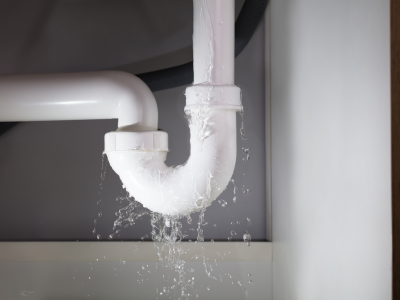
5 Homeowner Need-to-Knows About Indoor Plumbing
We often take plumbing for granted… until there’s a problem. But a little routine maintenance can help prevent plumbing issues before they become significant problems. Here are five ways to minimize plumbing setbacks.
1. Turn It Off
Know where your shut-off valves are located. That way, if there’s ever a plumbing emergency, you can quickly turn off the water and potentially spare your home from significant damage.
Locate the water main as well as individual shut-off valves throughout your home for sinks, toilets, etc., before you need them!
2. Fix Any Leaks
Water leaks waste water wherever they occur, whether it’s a dripping faucet or a leaking toilet tank. According to the US Environmental Protection Agency (EPA), water leaks account for nearly 10,000 gallons of wasted water each year in the average home—and 1 trillion gallons lost nationwide.
Fixing leaks early will save your sanity (from the constant drip-drip-drip) and your wallet. A leaking toilet, for example, can waste over 200 gallons per day, and you may not be aware that it’s happening!
To test your toilet, add a drop of food coloring to the water in the tank. If any color leaks through to the bowl in 10 minutes, you have a leak. Be sure to flush the tank after 10 minutes to prevent stains in your tank from the dye.
Another method is to turn off anything that uses water and immediately take a reading on your water meter. Don’t use any water for at least two hours, then recheck your meter. If there’s a usage increase, you probably have a leak.
Once you’ve identified the source of a leak, you’ll need to determine how to fix it. Many plumbing repairs are simple DIY projects like replacing a washer in a faucet or tightening a connection with Teflon pipe tape. In other cases, it’s best to call in a professional plumber!
3. Guard Your Drains
Slow drains are frustrating! Prevent clogs by keeping hair, soap, grease, and foodstuffs from going down the drain.
- In the kitchen, use a strainer to keep food and small objects out of the drain.
- Buy a guard to catch hair before it wiggles down shower and bath drains.
- When using toilets, never add anything beyond toilet paper—and too much toilet paper can also cause problems!
- Keep a garbage can handy in each bathroom, so non-flushable items are more likely to land in the trash instead of the toilet.
4. Protect Your Pipes
Know where your pipes are located behind the walls of your home. Otherwise, simply hanging a picture on a wall could puncture a pipe and cause severe water damage.
During the winter, a plunge in temperatures can cause pipes to freeze and burst. If any of your plumbing lines are vulnerable to cold weather, be sure they are well insulated.
When working on your plumbing, don’t overtighten the connections since this can lead to breaks or cracks. Use plumbers tape on metal fittings and wait for PVC glue to cure completely before turning on the water.
5. Clear a Clog
If a small object slips down a drain, retrieve it instead of “plunging” it. Forcing it deeper into a pipe can implant it more securely.
Instead of tearing apart your plumbing, try a couple of other tricks. Try using a wet-dry vacuum to dislodge the object. If that doesn’t work, you may want to purchase a small, flexible drain auger with a retractable claw to grab it and pull it out. These devices are also helpful for digging out clumps of hair and other minor clogs.
Be wary of using chemicals to clear clogged drains since they can damage pipes, are caustic and toxic, and damage the environment.
Take a few preventative steps and develop a habit of dealing with problems immediately. You can keep your plumbing in tip-top shape and prevent numerous plumbing-related headaches.
